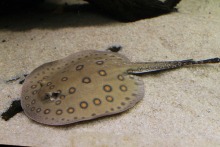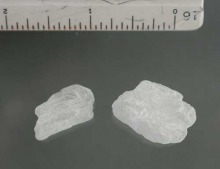Corpse medicine: dead people keepin' us living
Mummies in Egypt are as archetypal to our thinking of that area of the world as castles and Europe, samurais in Japan, or overalls and America. According to io9, from the 12th century to the 17th century, mummy powder was considered a valuable remedy for everything from stomach ulcers and headaches. Plaster casts of ground up ancient Egyptian were thought to cure skin ailments and broken bones. They were even given to sick hawks, which were popular for hunting in the Middle Ages.
Also hailing from the ancient times, ancient Rome to be exact, were the restorative powers of gladiator blood. Widely considered a cure for epilepsy, blood and liver would be harvested from fallen gladiators, and would even be administered directly from the fallen warrior’s arm. In fact, the gore was even sold at stands outside the coloseums directly after a fatal fight.
Physicians in the 17th century did not undergo quite the same rigorous education as they do today. In evidence, English physician John French would use human brains, distilled with lavender and other things as an epileptic cure. He recommended using the brain of a young man that had died violently to be marinated in wine and horse dung before being distilled. Even worse, a German chemist diced and mashed an entire corpse into a paste before distilling it.
Some necrotic remedies may exist today. Tai Bao capsules, reportedly composed of powdered placenta and aborted fetus material, are considered valuable in improving virility, beautifying skin, and even treating asthma.
There are plenty of crazy claims out there that go much farther than just “snake oil.” Using a hanged man’s hand to cure cysts, boils, and even hemmorhoids was popular in the 17th through 19th centuries. In addition, executed men would often have their fat excised and boiled into an ointment to cure everything from joint issues and tremors. There’s even a disturbing report from China of a “Mellified Man,” a man that is given only honey until her dies, and then buried in a coffin full of honey. After 100 years the seal is broken and the resulting “confection” is used to treat battle wounds.
Cactuar: The Other Walking Cactus
The Death of Lincoln: Conspiracy Central
Micronations: DIY Statehood
Anyone can declare a micronation at any time. The key difference between a micronation and a fantasy nation, political exercise like a school's "Model United Nation," or role-playing group is that a micronation is tied to a specific physical asset, be it an island, a home, or a parcel of property. Reading this article, you can draw a line around your desk and declare it your own micronation. And many people have done exactly this, for a variety of reasons.
Is a town in India being overrun with poisonous spiders?
Amelia Earhart: Evidence found?
Earhart disappeared in July of 1937. In December of 1938, a small group of British settlers were dropped off on the island as part of a misguided settlement plan (which quickly failed). In addition to some scattered skeletal remains, they found the broken remains of bottles which once held freckle cream (Earhart was known to be self-conscious about her freckles) and a hand cream that was popular with women in 1937. The bottles had been broken and used for survival: some had melted bottoms, from standing in a fire to boil water. Other shards had been used as cutting tools.
Transgenic Sting Ray Shoes
So here is a thing which is - I would estimate - at least 93 percent fake.
There is no single gene to control color or coat pattern in animals. And even if there were, there's no way to inject that gene into something as biologically dissimilar as a stingray and have it not only remain a viable fetus, but grow up to express those very same genes. That's just not how biology works. End of story.
CDC insists there is no Zombie Apocalypse
(Also, the CDC's headquarters come with roll-down metal shutters at ground level, so that it can close itself up like a New York City deli when the Zombie Apocalypse comes. The things you learn on television!)
Bath Salts and Cocaine Psychosis
A loophole in FDA regulation means that designer drugs can often escape legislation for a little while, if they are sold under another name, with a different ostensible purpose. Which is why people can take a designer drug very similar to meth, label it "bath salts," package it in a plastic tub, and legally sell it to people who know full well that it's drugs.














